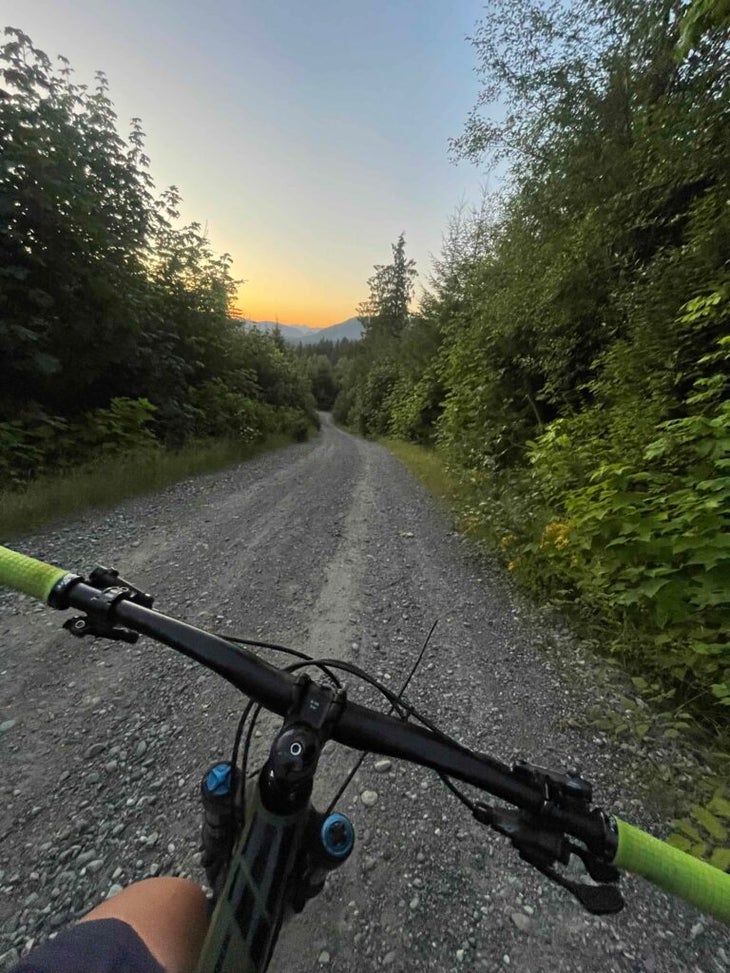Heading out the door? Read this article on the new Outside+ app available now on iOS devices for members! Download the app.
One piece of gear has revolutionized my hiking agenda this summer. It’s not a backpack or a tent, or any of the big five, for that matter. It’s not even a piece of hiking gear.
It’s my mountain bike.
I’ve always been more of a dabbler in many outdoor sports than committed to a single discipline. Trading off between hiking, mountain biking, skiing, and running prevents me from getting bored. But rarely have I combined my favorite sports into a single adventure—until this summer.
I love exploring the singletrack near my house on my mountain bike, but lately I’ve been taking it further afield as a way to access remote hiking trailheads. When I discovered that a handful of nearby trailheads have been rendered inaccessible to cars thanks to road washouts and other deferred maintenance, at first I was bummed. But, of course, there’s an upshot: Harder access means fewer hikers and more solitude.
Many long-distance backpackers are familiar with road walking. To reach any of these trailheads, I could just tack extra miles onto the hike. But in many cases, that doubles the mileage, adding a time-consuming slog onto a hike that already might barely fit into a weekend or the short window of daylight after work. But on a bike? Those miles fly by—and are way more fun.
Just a few weeks ago, some friends and I used our bikes to access Canyon Lake Community Forest, home to some of the oldest trees in the Pacific Northwest. Once a popular spot for swimming and hiking, the park now requires a 6-mile approach on a decommissioned dirt road. Thanks to our bikes, we were able to cover nearly 20 miles on wheels and on foot—all after work. We berry-picked, bushwhacked, explored a hiking trail through the old-growth forest, enjoyed a quick paddle in a canoe that’s been left for visitors at the lake, and rode down before dark. It was a summer adventure for the memory books squeezed into a weekday evening. Best of all? We had the forest to ourselves.

Just last weekend I rode my mountain bike to the trailhead for the Three Fingers Lookout, an iconic hike in the North Cascades featuring 16 extra roundtrip miles thanks to a road washout. My bike made the 31-mile adventure feasible for a standard weekend (no alpine start, and I got home early enough on Sunday to enjoy a few leisurely hours around town before dark). Plus, cruising the final 8 miles on my bike surely beat any slog out on foot after a long weekend of hiking. My knees thanked me, too.
My bike has allowed me to go farther, faster this summer—not in lieu of hiking, but in support of it. The ability to access remote trails has opened a whole new world of hiking potential. Here’s how you can expand your hiking opportunities, too.
How to Bike-to-Hike
- Start small. A solid biking fitness base allowed me to tackle thousand-foot approaches on two wheels—but hiking and biking fitness don’t always translate. If you’re new to biking, start with a few miles at a time, ramping up distance and elevation gain as you progress. Biking with an overnight pack significantly ups the difficulty.
- The right bike matters. A bike with wide, grippy tires is crucial when the road or trail gets loose. Gravel bikes and mountain bikes are ideal for hiking approaches—I’ve been grateful to have full-suspension when barreling down chunky dirt after a long hike.
- It’s OK to walk. Don’t worry about hopping off your bike when the ascent gets especially steep. Of course, walking your bike the whole way defeats the purpose, but you’ll be glad to speed up the descent when it’s time to go downhill.
- Avoid bike theft. I worry far less about leaving my bike unattended at a remote trailhead than I do around town. Still, it’s a good idea to tuck your bike out of sight when you hit the hiking trail, or bring a lock to secure it to a tree.
- Follow local regulations. Don’t use your bike to access closed trails or hiking-only trails. Read up on guidelines for your area to ensure bikes are allowed on your chosen approach.
- Respect right of way. When on your bike, always yield to hikers. Just like hikers, downhill bikers must yield to uphill bikers. Always yield to horses and other pack animals on the trail.
